Disclaimer: This post may contain Amazon affiliate links. Sudachi earns a small percentage from qualifying purchases at no extra cost to you. See disclaimer for more info.
What is Japanese Dry Curry?
Dry curry (ドライカレー) is a type of broth-less curry that contains little to no liquid. It is typically prepared without adding liquid, or using only a little which is then simmered down and evaporated during cooking. The absence of liquid and fixed ingredients are key characteristics of this dish.
The Japanese dry curry was inspired by the “keema curry,” a similar curry dish using minced meat. It is believed that dry curry was first created in the 1910s on the Mishima Maru, a cargo ship that traveled to Europe.
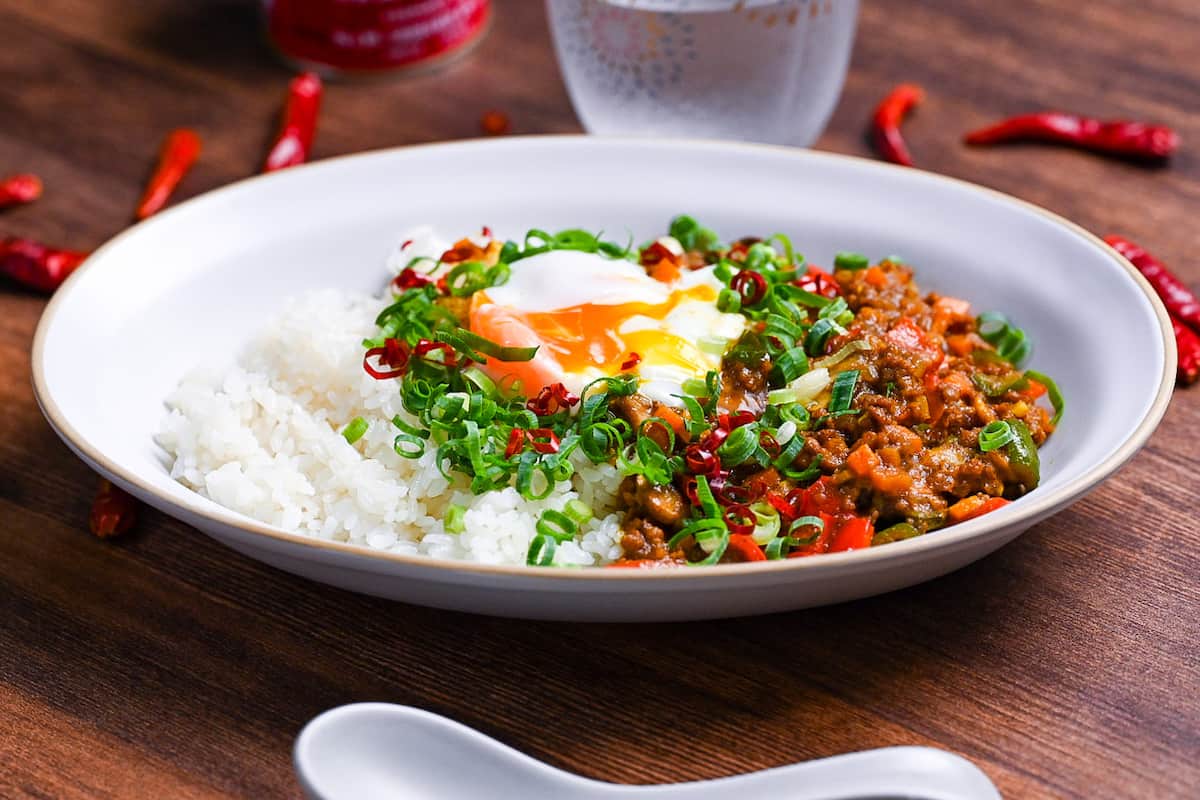
While dry curry is currently considered more of a curry-flavored rice dish, it initially resembled keema curry more. At the time of its creation, minced meat and onions were combined with curry powder, and then the mixture was cooked until all of the water had evaporated.
Over time, dry curry evolved in Japan, becoming a unique dish without a broth.

How I Developed This Recipe
Dry curry may not have a reputation for being visually appealing, but I made sure to add colorful ingredients to create a beautiful dish that would be perfect for a café.
In addition to the regular Japanese curry spices, I included red and green bell peppers for a pop of color. I added chopped green onions, red peppers, and hot spring eggs for toppings to make it even more visually appealing.
The taste is not too spicy, making it easy to eat. It is also designed to be eaten with white rice, so please enjoy it with freshly cooked rice.
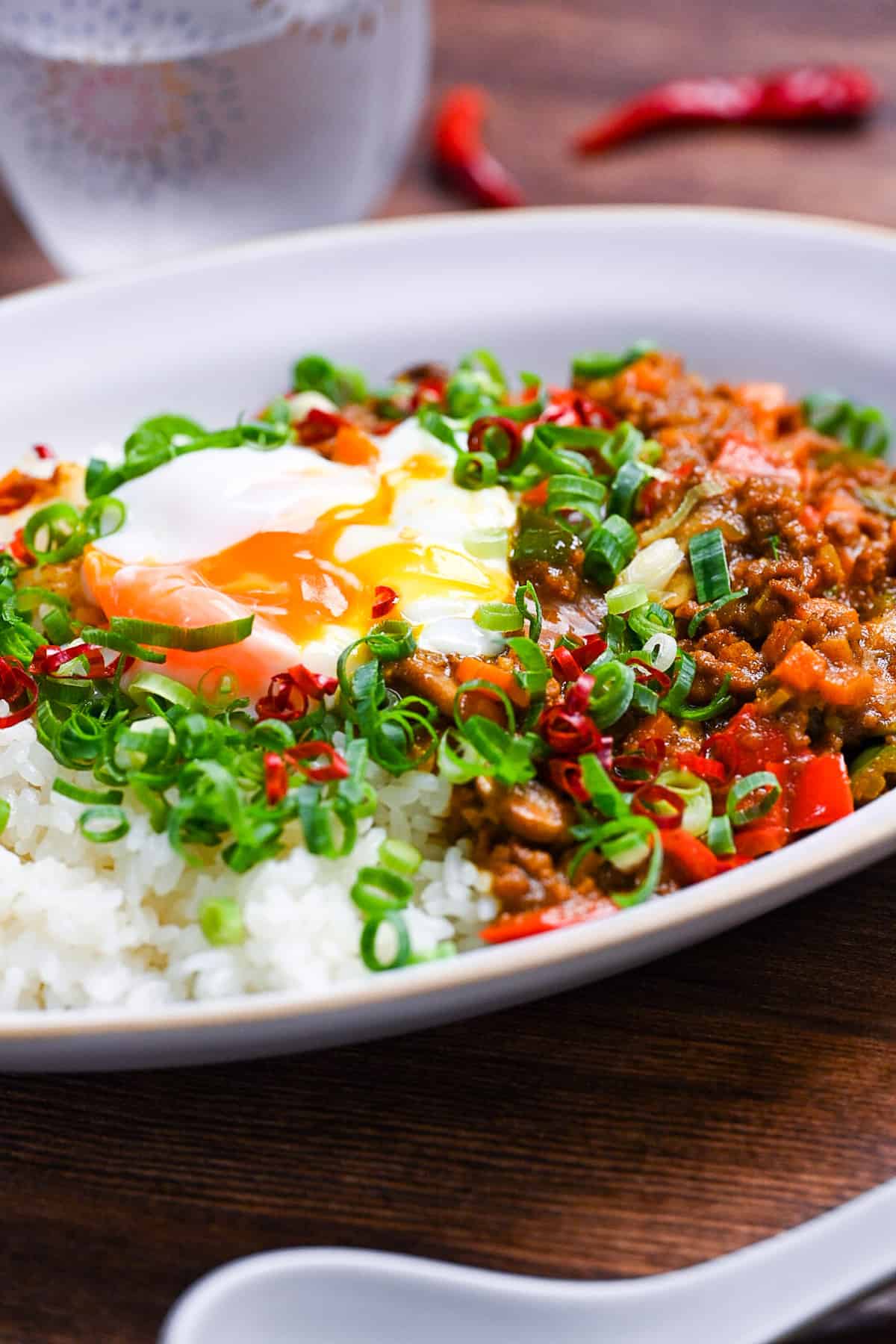
Ingredients & Substitution Ideas
As with most curry recipes, dry curry can be customized to suit your tastes. Other vegetable options include zucchini, eggplant, tomatoes, renkon or any vegetable that can be diced and stir-fried.
- Cooked Japanese short-grain rice: For recommendations on Japanese rice available in the U.S. and cooking methods, refer to the “How to Cook Japanese Rice” recipe.
- Ground beef/pork: I opted for a 50-50 mix of pork and beef, but feel free to use either exclusively.
- Yellow onion: While yellow onions are the norm in Japan, white onions are a suitable alternative.
- Carrot: Adds a nice crunch. Dice finely for even cooking.
- Bell peppers: I incorporated green and red for vibrant color, but any combination or single color works.
- Brown button mushrooms: Add earth depth and balance to the dish. Your local mushroom varieties can be used as substitutes.
- Garlic & Ginger: Chop finely to infuse the dish with aromatic flavors.
- Unsalted butter: Opt for unsalted to control the dish’s saltiness. If using salted butter, adjust salt levels accordingly.
- Cake flour: To help thicken the curry. All-purpose flour is a viable substitute.
- S&B Curry powder: Essential for achieving the signature Japanese curry taste.
- Chicken bouillon soup: I utilized Youki’s additive-free Garasupu, but Western-style chicken bouillon stock is also suitable. Follow the specific instructions for your chosen powder when preparing the soup stock.
- Red wine: Enhances the dish’s depth of flavor and compliments the flavor of the meat. White wine is an alternative; if you prefer a non-alcoholic version, you can omit it completely.
- Tomato ketchup: Adds sweetness and complexity. I used Heinz, but any standard ketchup will suffice.
- Worcestershire sauce: Its distinct sweetness and vegetable undertones complement dry curry perfectly.
- Soy sauce: Kikkoman soy sauce is a reliable and affordable choice. For a comprehensive guide on soy sauce selection, refer to our complete guide on Japanese cuisine.
- Bay leaf: Helps neutralize any strong odors from the ground meat.
- Toppings: My choices include onsen tamago, chopped green onions, and sliced dried chili peppers. If onsen tamago isn’t available, boiled or raw eggs are suitable substitutes.
Curious about the exact brands and products that bring my recipes to life? Discover the brands and ingredients behind my recipes at the Sudachi Amazon Storefront. Explore my handpicked pantry essentials and find your next kitchen favorites!
Jump to Full Recipe MeasurementsSwap the ground meat and chicken stock for plant-based alternatives to make this dish suitable for vegetarians and vegans!
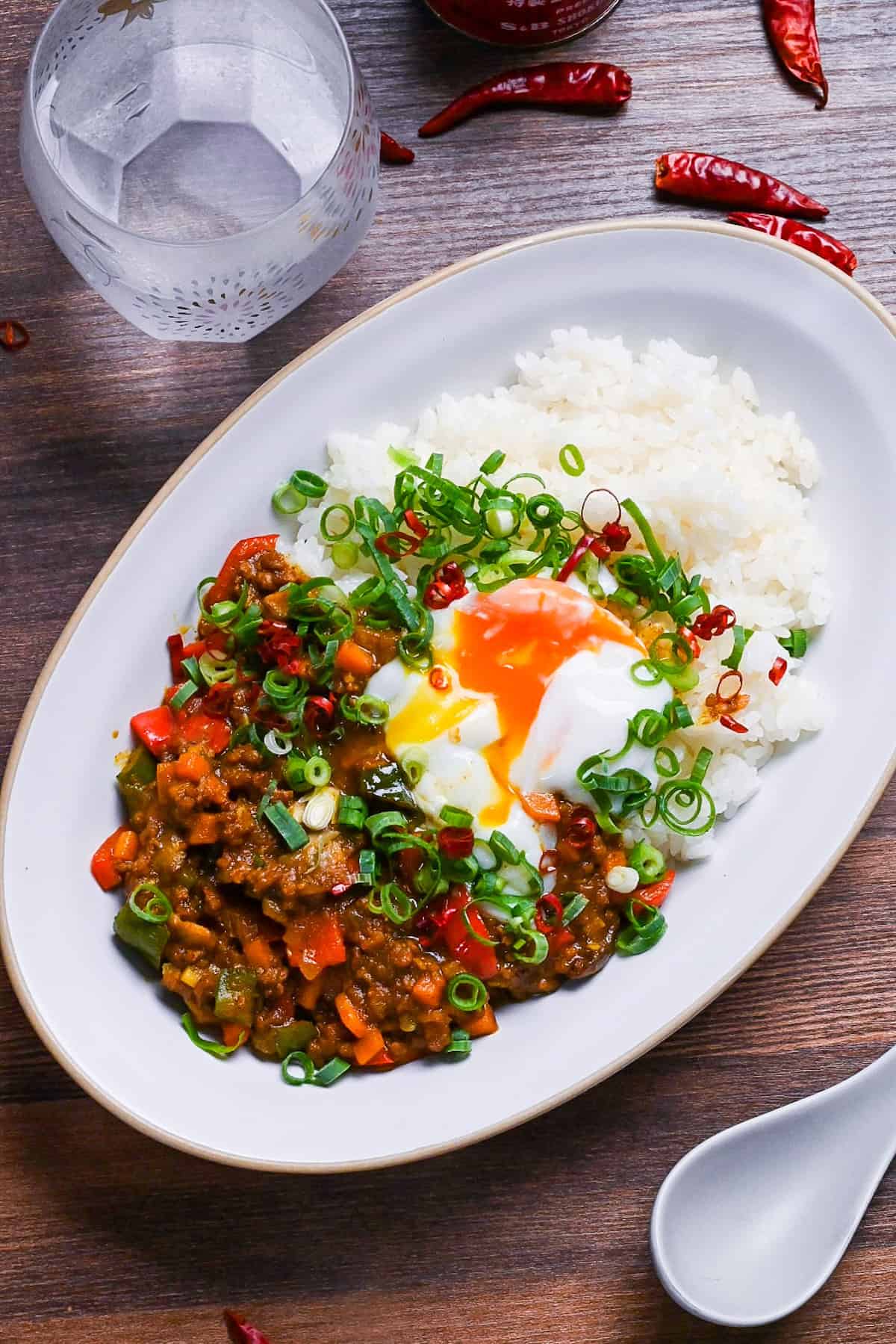
Visual Walkthrough & Tips
Here are my step-by-step instructions for how to make Japanese Dry Curry at home. For ingredient quantities and simplified instructions, scroll down for the Printable Recipe Card below.
Heat a pan on medium-high and add unsalted butter. Once melted, add finely diced garlic, ginger and yellow onion, and fry until fragrant.
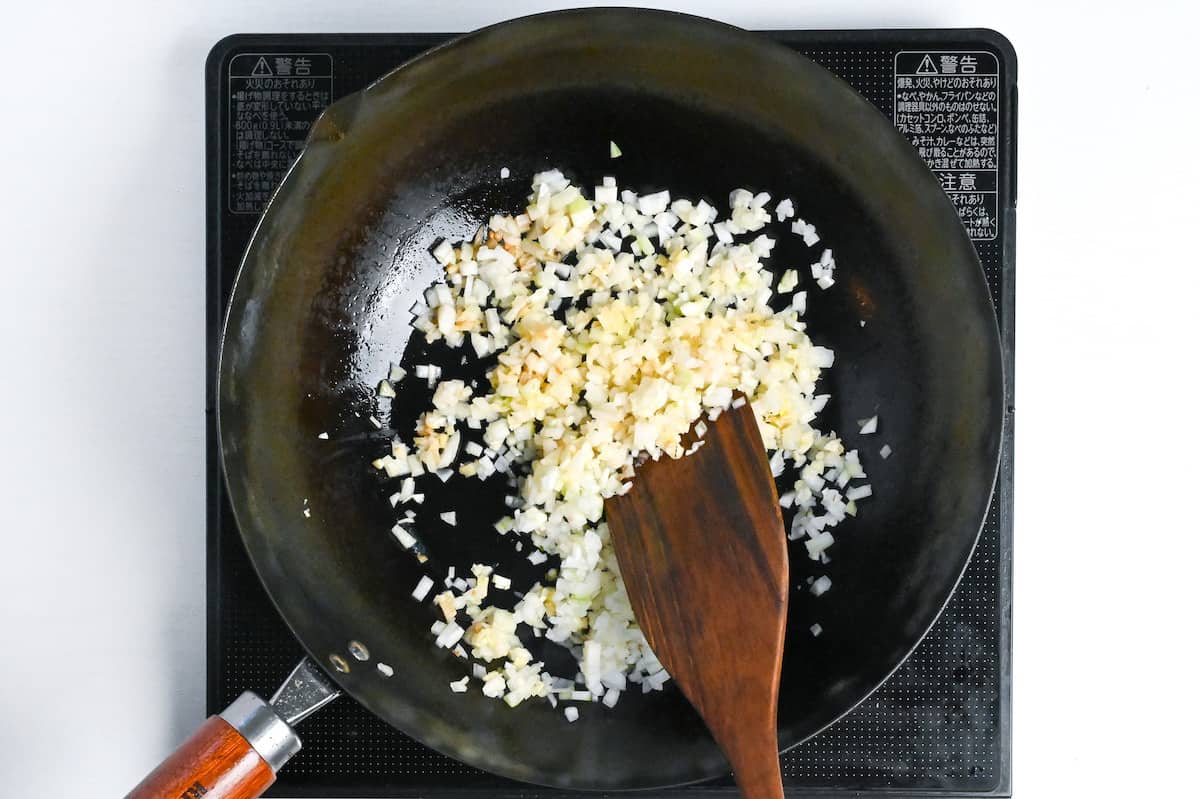
Add the ground meat, diced bell peppers, sliced mushrooms and finely diced carrot. Stir fry everything together until the meat is cooked through.
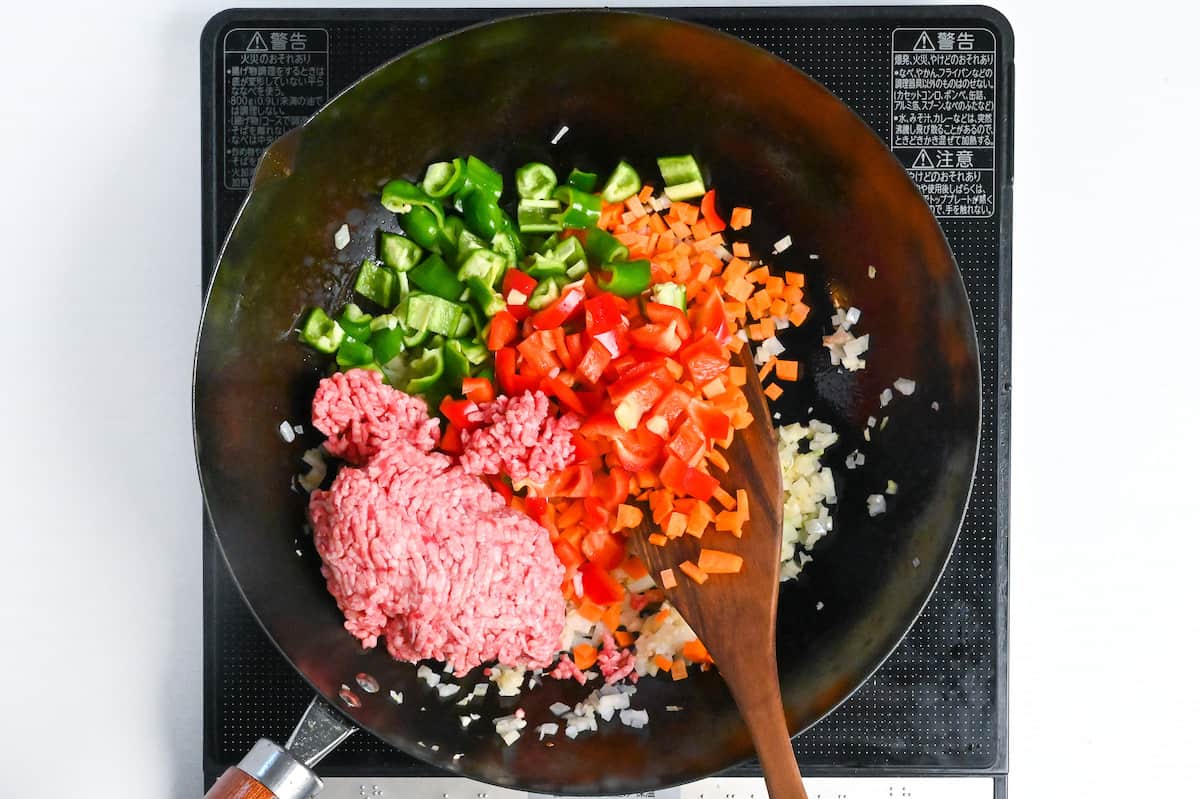
Add the curry powder and cake flour, and mix until evenly distributed.
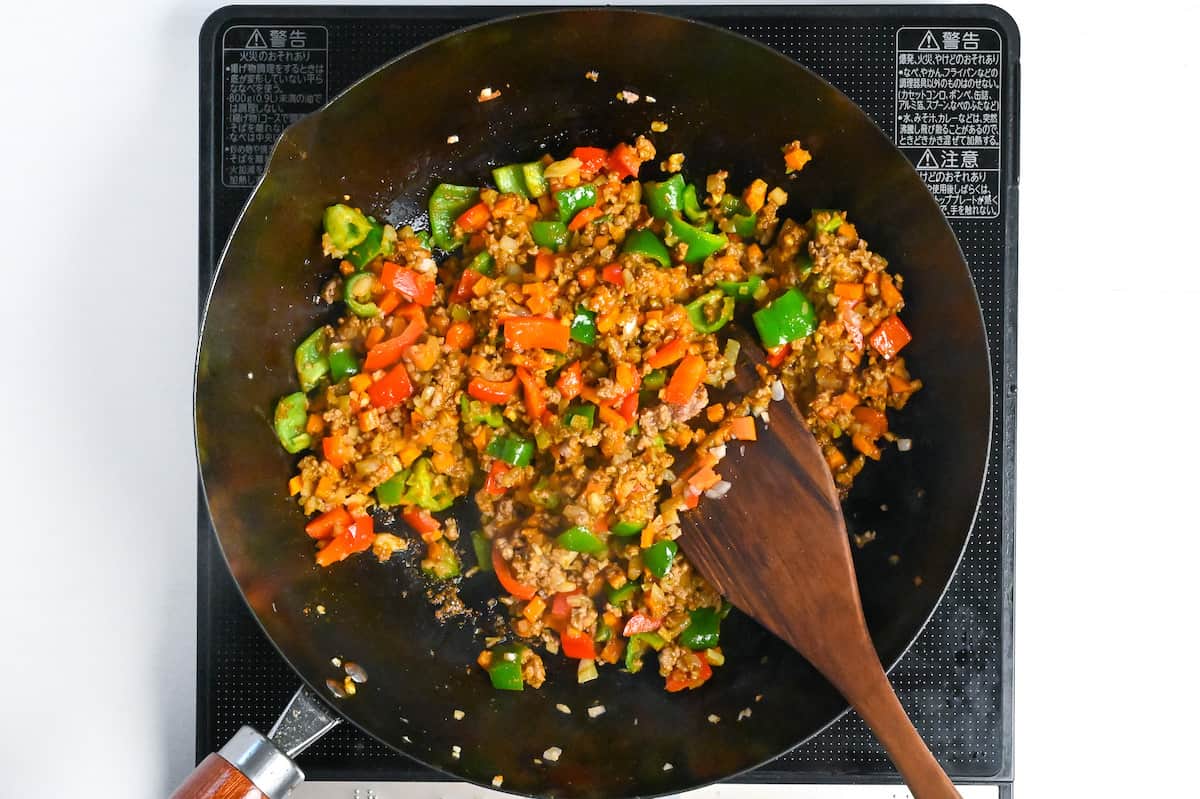
Add the ketchup, soy sauce and Worcestershire sauce, and mix. Finally, add the chicken stock and a bay leaf, and simmer until the liquid has almost gone.

Once thick and soupless, sprinkle salt and pepper to taste. Mix well and remove the bay leaf.
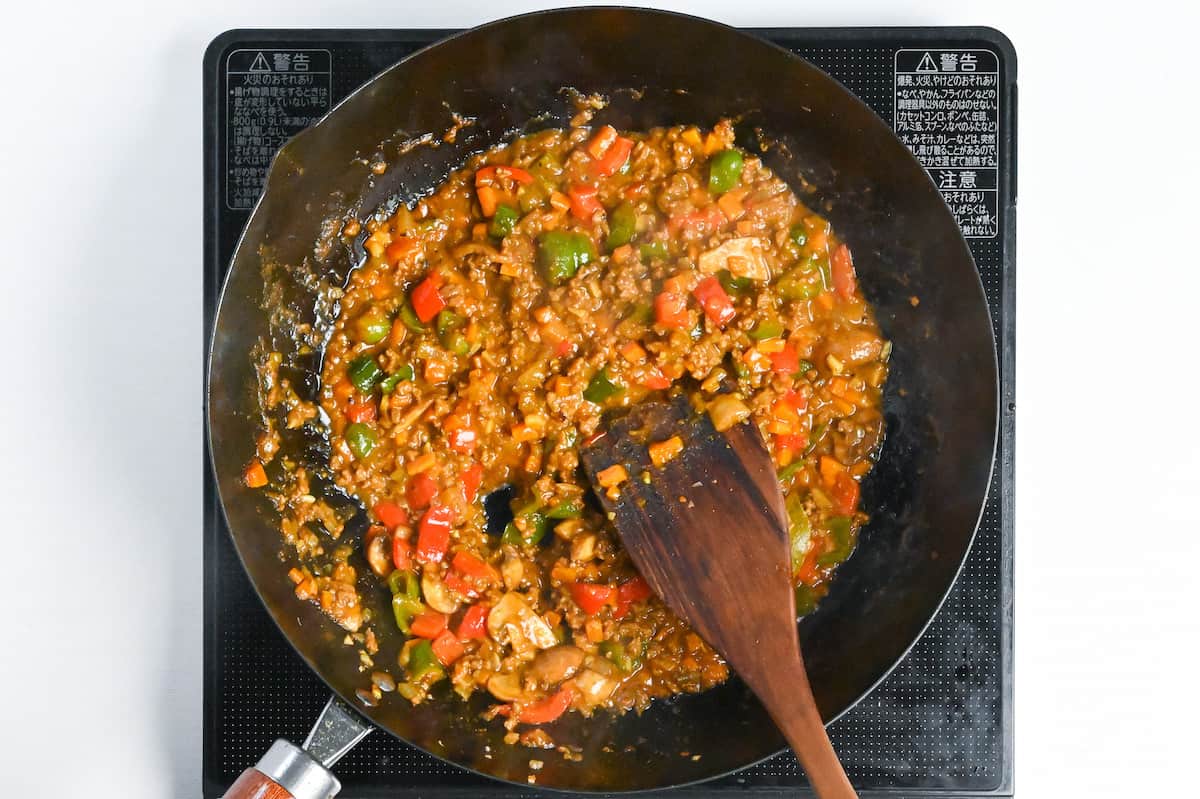
Serve with white rice and your favorite toppings. I used chopped green onions, dry red chili pepper and an onsen tamago.
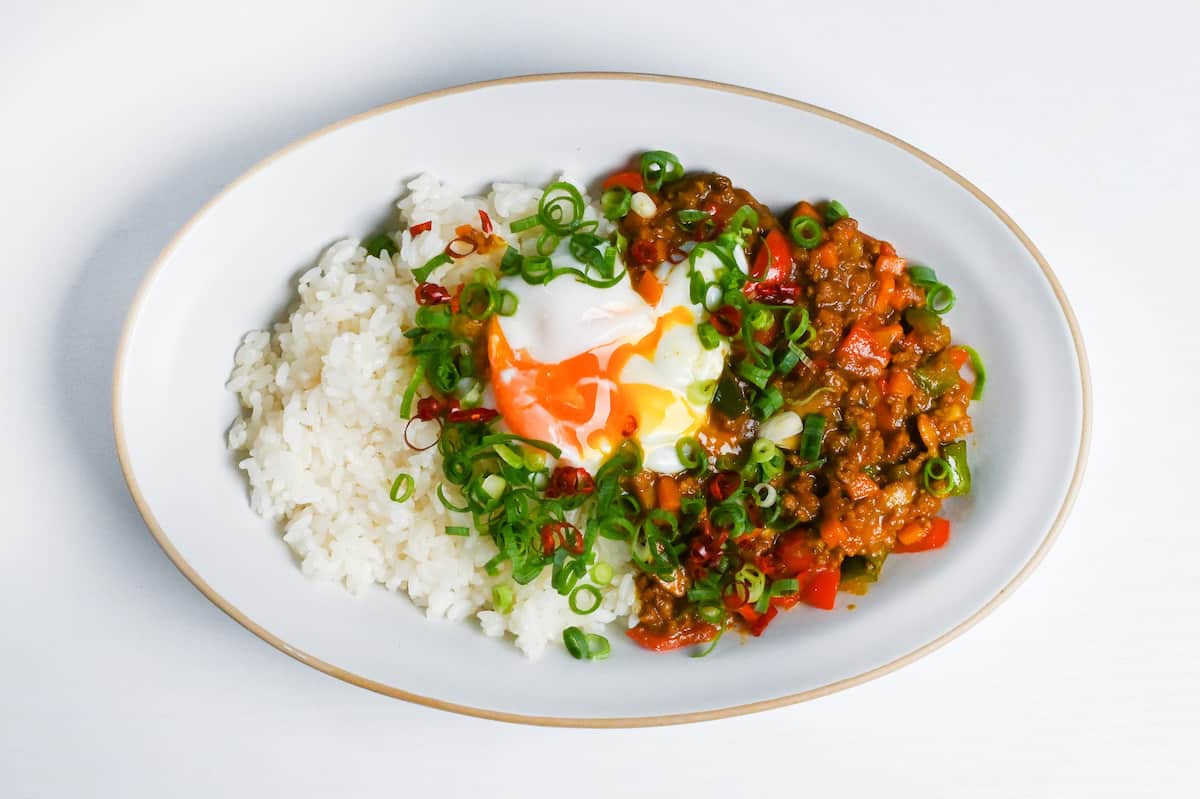
Enjoy!
Jump to Full Recipe MeasurementsHow to Store
To maintain the flavor and quality of dry curry, avoid storing it at room temperature, as this can lead to spoilage. Instead, refrigerate or freeze it.
Refrigerated dry curry lasts about two days; always check its smell and color before consuming it.
For extended storage, dry curry can be frozen for up to one month. Before eating frozen curry, reheat until piping hot and ensure it smells and looks fresh.
Storage summary
Room temperature – Not recommended.
Refrigerated – About 2 days.
Frozen – Up to a month.
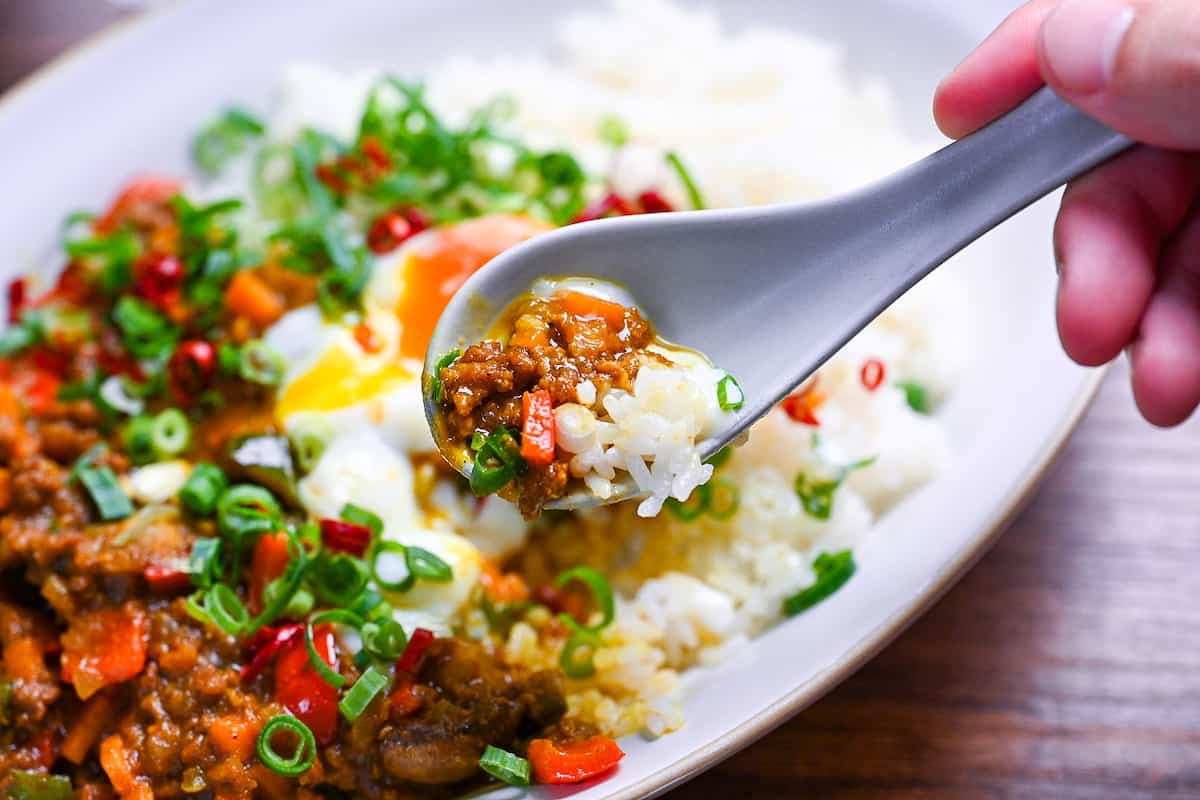
I hope you enjoy this Dry Curry recipe! If you try it out, I’d really appreciate it if you could spare a moment to let me know what you thought by giving a review and star rating in the comments below. It’s also helpful to share any adjustments you made to the recipe with our other readers. Thank you!
More Curry Recipes

Japanese Dry Curry Rice
Ingredients
- 1 tbsp unsalted butter
- 1 tsp ginger root finely diced
- 1 tbsp garlic finely diced
- 100 g yellow onion finely diced
- 150 g ground meat beef/pork mix
- 50 g brown button mushroom sliced
- 50 g red bell pepper diced
- 50 g green bell pepper diced
- 50 g carrot finely diced
- 2 tbsp Japanese style curry powder
- ½ tbsp cake flour
- 1 tbsp red wine
- 200 ml chicken bouillon
- 2 tbsp tomato ketchup
- ½ tsp soy sauce
- 1 tbsp Worcestershire sauce
- 1 bay leaf
- 1 pinch salt and pepper
- 2 portions cooked Japanese short-grain rice
- finely chopped green onions
- dried red chili pepper thinly sliced
- 2 onsen tamago or soft boiled eggs
Instructions
- Heat a large pan on medium high and add 1 tbsp unsalted butter. Once melted, add 1 tsp ginger root, 1 tbsp garlic and 100 g yellow onion and stir fry until fragrant.

- Add 150 g ground meat, 50 g brown button mushroom, 50 g red bell pepper, 50 g green bell pepper and 50 g carrot. Stir fry until the meat is cooked through.

- Add 2 tbsp Japanese style curry powder and ½ tbsp cake flour and mix until evenly distributed.

- Add 1 tbsp red wine, 200 ml chicken bouillon, 2 tbsp tomato ketchup, ½ tsp soy sauce, 1 tbsp Worcestershire sauce and 1 bay leaf. Cook until the liquid has almost gone, stirring occasionally to prevent burning.

- Add 1 pinch salt and pepper, mix well and remove the bay leaf. Remove the pan from the heat and serve.

- Divide 2 portions cooked Japanese short-grain rice between serving plates and pour the dry curry next to it. Sprinkle with finely chopped green onions and dried red chili pepper, then top with onsen tamago or a soft boiled egg.

- Enjoy!
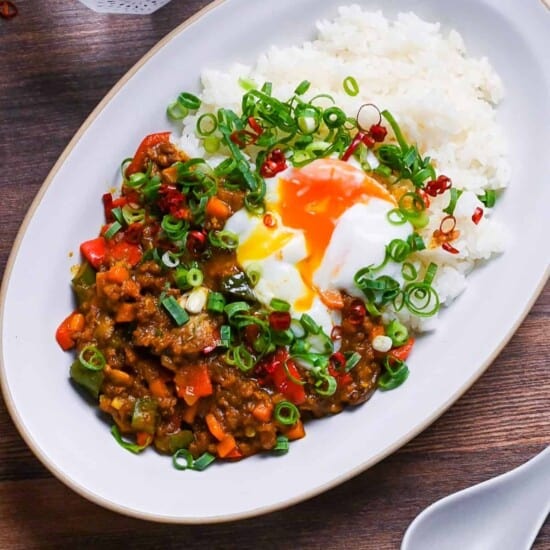


Leave a rating and a comment